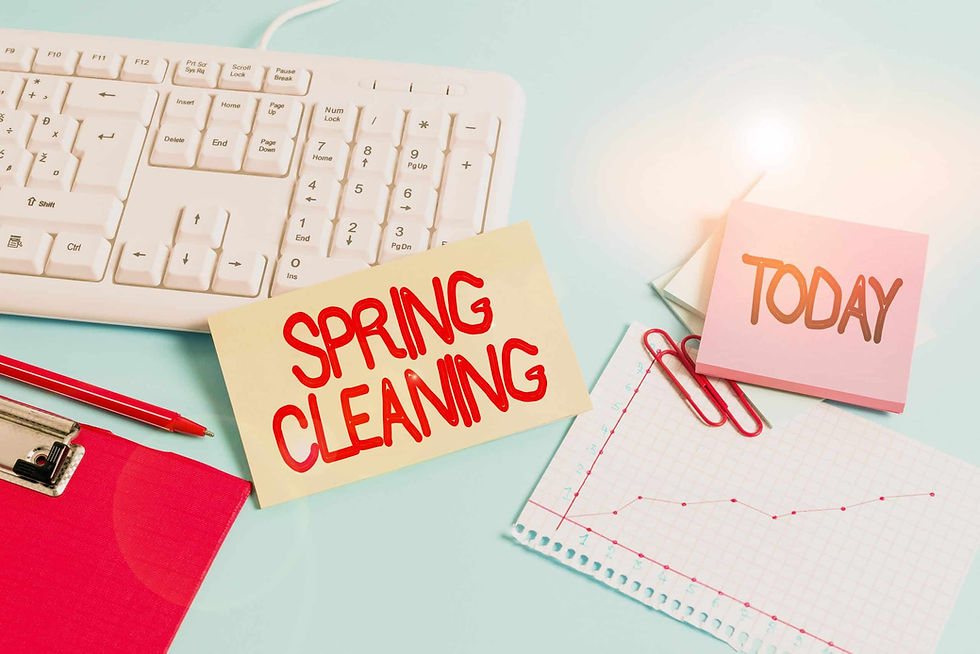5 Best Practices for Reopening Your Facility
- Jeremiah Heffron
- Jun 15, 2020
- 3 min read

As several U.S. states allow businesses shuttered during the COVID-19 pandemic to resume operations, facility managers must plan a smooth reopening process. Customers will scrutinize the visual appearance of these facilities and question the processes and procedures in place to maintain cleanliness, and in turn, health and safety. Facility managers can help assure building occupants—whether employees or visitors—they are welcome and safe, even as the threat of coronavirus lingers in their minds.
Set reopening requirements
When preparing to open a facility after a temporary closure, it is imperative to not rush the process. Consider abiding by the following five best practices before and after allowing occupants back inside.
1. Conduct a top-to-bottom cleaning and reassess standards and procedures.
Oversee a thorough cleaning and disinfection of the building before it reopens, making sure there are enough cleaning and sanitizing products on hand to conduct frequent cleanings. Follow the U.S. Centers for Disease Control and Prevention (CDC) guidelines for cleaning and disinfecting various surfaces. Additionally, consider the benefits of training and professional
certifications to improve cleaning protocols over the long term.
2. Eliminate foul odors; create fresh scents.
Facilities should not only look clean, but also smell clean. According to a survey by the Harris Poll, foul stenches lead 56% of Americans to assume a facility is not clean. Odors may be the result of mold and mildew, urine and feces, or even sweat and body odors. It is crucial that facilities establish an odor elimination program that consistently eradicates malodors at the molecular level and replaces them with fresh fragrances. A malodor-neutralizing agent eliminates rather than masks these smells.
3. Make it easy for customers to sanitize hands and disinfect surfaces.
Since contaminated hands can spread pathogens, it is also important that facilities make hand sanitizer and disinfecting wipes readily available. The CDC recommends using a hand sanitizer containing at least 60% alcohol to kill germs effectively. Consider deploying touch-free dispensers in high-traffic locations throughout the building, such as at entrances and near elevators. In addition, look for disinfecting wipes with ingredients that are gentle on furniture and finishes, but tough on germs. At a time when guests are nervous to touch things without wearing gloves, they will appreciate that the facility is encouraging everyone to keep hands and surfaces clean.
4. Elevate the visibility of cleaning and those who execute it.
During and post-pandemic, facilities need to regularly address germ and odor hotspots, like restrooms and entrances, to assure customers of the facility’s dedication to cleanliness. Cleaning while customers are present is a great strategy for demonstrating that the organization prioritizes occupant well-being. Daytime cleaning protocols should include regularly disinfecting shopping carts and baskets. Consider bringing your cleaning and maintenance staff members to the forefront by posting their photos, along with a message explaining how their work protects people, in restrooms, checkout areas, or entrances. Now is the time to shine a light on their important work and add a human element to the practice of cleaning.
5. Implement crowd-control measures.
As COVID-19 spread, essential businesses, like supermarkets, implemented measures to keep customers physically separated, even as they continued to shop. Employees encouraged customers to stand six feet apart in line and limited occupancy to discourage dense crowds. Facilities that are reopening now can learn best practices from businesses that safely remained open. Those that stayed open can add further crowd control measures. For example, employees at supermarkets and large retailers can take customers’ temperatures using thermometer guns or other body temperature measuring devices before they enter the premises. They can also give customers disposable gloves to avoid direct contact with food, goods, or surfaces. Overall, facility managers should make an informed decision about the crowd-control strategies best suited for their facility and then be diligent in enforcing these strategies to protect employees and guests.
Please contact us for a free estimate to disinfect & keep your building clean at www.choice.services



Comments